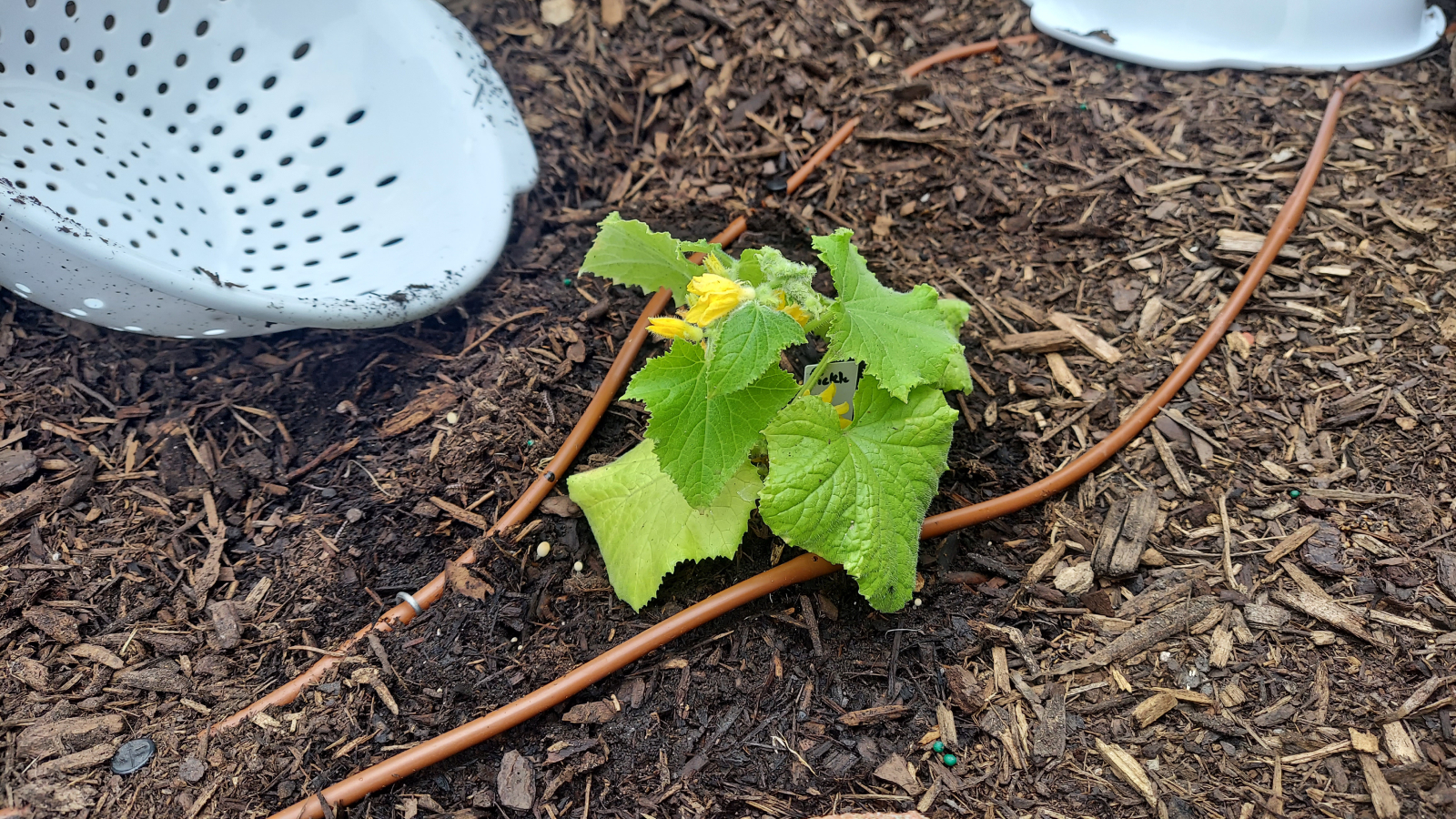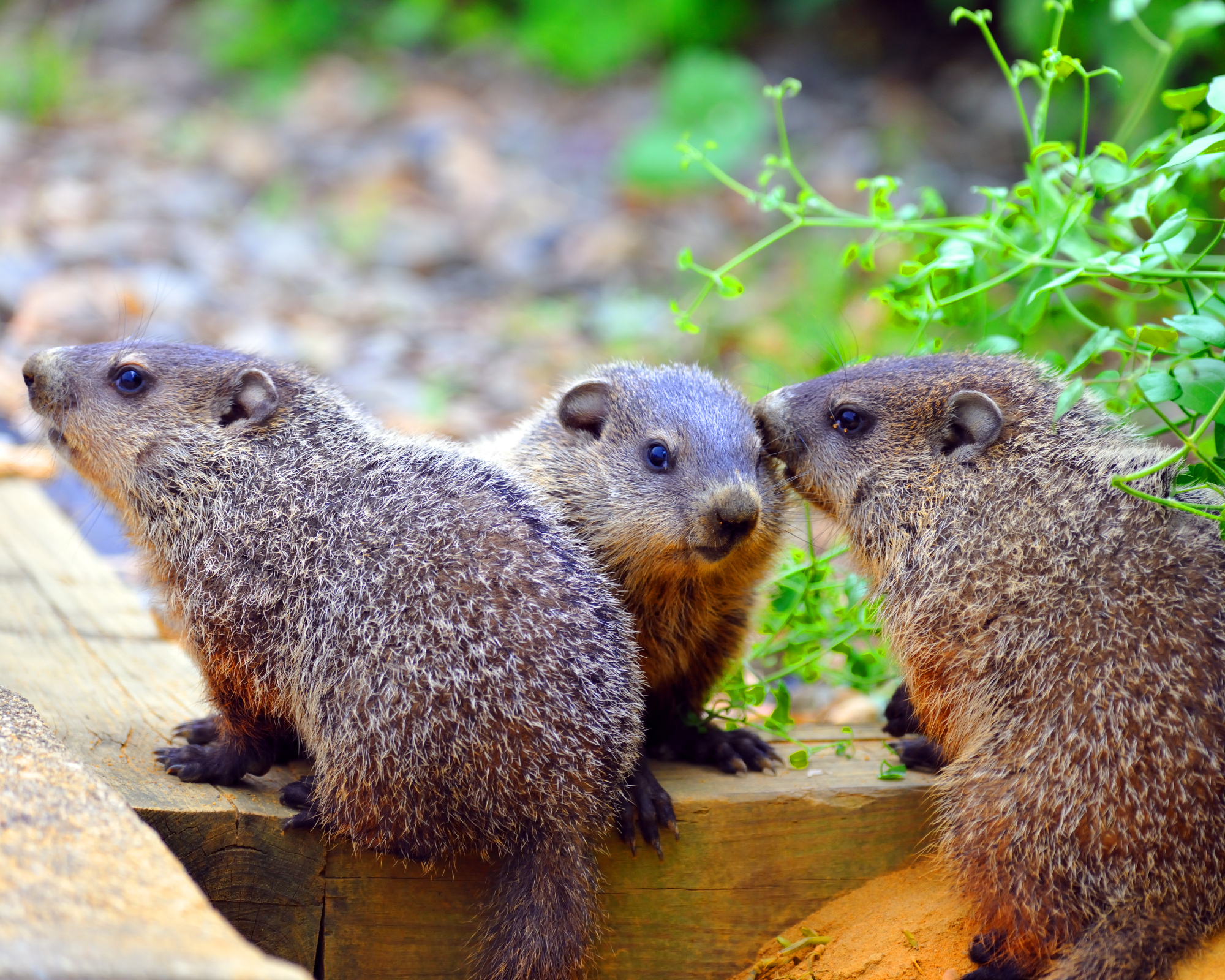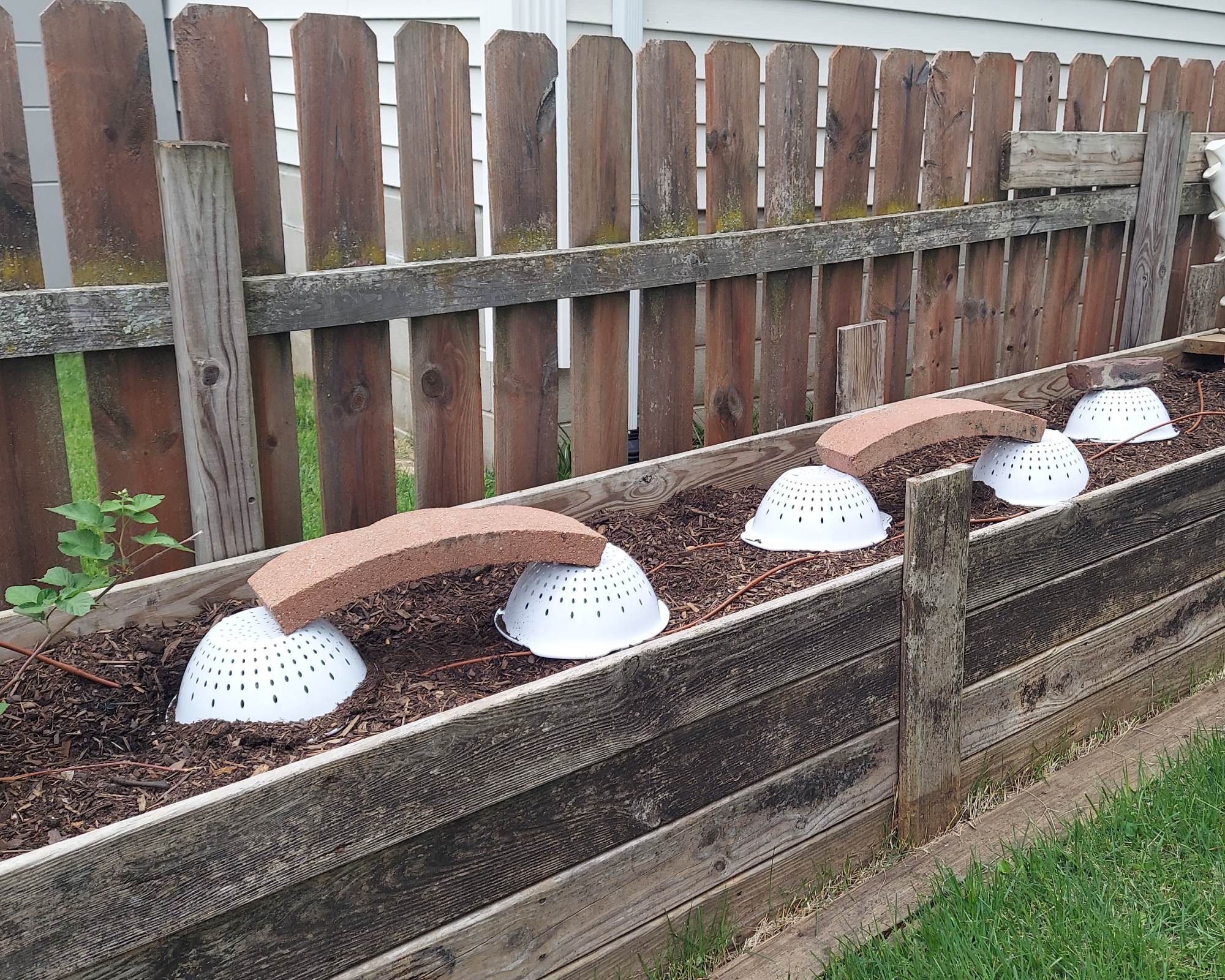This $1.25 Item From The Dollar Store Saved My Cucumbers From Groundhogs – Protect Your Vegetable Garden With My Easy Solution
Learn how to make a cheap garden cloche to protect your seedlings and plants from pesky groundhogs and other animals looking for a nibble.


I was getting ready to leave town for two weeks when I noticed five furry groundhog pups bumbling about in my grass. I had just planted all my cucumbers and I knew that they would be decimated by those little groundhogs if I didn’t do something.
Excluding groundhogs from your garden with fencing is the best practice, but keeping animals out of the garden without a fence is more difficult. I didn’t have time to build a fence or enclosure before I left town, so I thought a garden cloche might do the trick! The only problem was that I couldn’t find a cloche in any garden center or store I visited.
Enter the dollar store colander. This $1.25 item saved my cucumber seedlings from a family of groundhogs for the entirety of my trip. Learn how you can make a cheap cloche to protect your garden too.
Cheap Cloche To Protect Garden From Groundhogs

Groundhogs, also called woodchucks, are marmots and their native range is from the eastern half of the United States and Canada across to parts of Alaska. They are an important species in our ecosystem, they have a strong kinship bond with their pups, and sometimes they even become internet famous like Chunk the groundhog! However, they are often the bane of gardeners. Groundhogs like to eat clover, dandelions, and mulberries, but also the flowers and vegetables we like to plant in our gardens.
It is difficult to get rid of groundhogs. Since they burrow, the most effective solution to keep them out of the garden is to build a fence that extends under the ground by 1 to 2 feet (.3 to .6 m). A quick solution for a short period of time is a garden cloche. The goal is to make your seedlings more difficult for the groundhogs or other animals to eat. When they encounter a barrier, they will go with the path of least resistance and eat something else instead.
There are beautiful chicken wire cloches you can buy from retailers like Lowe’s, but sometimes you don’t have time to wait on a shipment. A simple plastic colander and a brick saved my cucumber seedlings from the den of groundhogs in my backyard.
Materials For Cheap Garden Cloche
- Colanders, or plastic bowls with holes drilled - one per plant
- A brick, rock or other weight - one per plant
How To Set Up Garden Cloche

First, plant your seedlings and set up any type of irrigation system that you may have. Then take your colanders, or plastic bowls that you have carefully drilled holes into, and place over each seedling. Place your bricks or rocks on top of the colanders to weigh them down. I used curved brick border pieces that the previous homeowner left in the garden.
Sign up for the Gardening Know How newsletter today and receive a free copy of our e-book "How to Grow Delicious Tomatoes".
The holes in the colander let some light through and also allow for ventilation. This is a simple, cheap, and easy solution for short term protection and it kept the groundhogs away from my cucumbers for two weeks while I was away.
Frequently Asked Questions
What is the best groundhog deterrent?
Many people say cayenne pepper, talcum powder, black pepper, and other common household items can deter groundhogs, but I have never found any of those solutions to be effective. The only way to keep them out is to exclude them with fencing they can’t burrow under.
What attracts groundhogs to your property?
Groundhogs are attracted to places that provide them with their desired shelter and food sources. A yard with shrubs or even a woodpile provides them with some cover as they create and utilize their dens. Groundhogs love to eat grass, clover, mulberries, and all the delicious vegetables and flowers we plant.
Sometimes having a dog in the yard can scare them away, so if you do not have a dog, your yard is a safer option for the groundhogs than your dog-loving neighbor’s yard. Unfortunately, a lot of people have yards that are perfect habitats for these marmots.

Kathleen Walters joined Gardening Know How as a Content Editor in 2024, but she grew up helping her mom in the garden. She holds a bachelor’s degree in History from Miami University and a master’s degree in Public History from Wright State University. Before this, Kathleen worked for almost a decade as a Park Ranger with the National Park Service in Dayton, Ohio. The Huffman Prairie is one of her favorite places to explore native plants and get inspired. She has been working to turn her front yard into a pollinator garden.